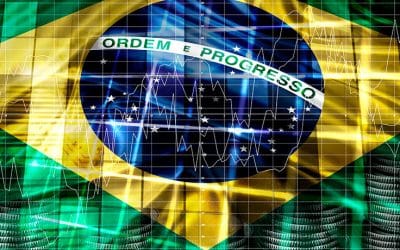Parallels between success in sports and in finance

Redacción Mapfre
The days go by and the echoes of the sporting feat achieved by Rafael Nadal in the final of the Australian Open continue to echo, having come back from a match he had almost lost and thus becoming the first man in history to win twenty-one Grand Slams. Much has already been written about the life lessons that the Spanish tennis player usually gives us. But what lessons can those of us in the world of finance draw from the final of the Australian Open?
Value investors, which are a peculiar species, have in Warren Buffett our particular north star to guide us as we navigate the markets. Now, let’s try to see if any of the teachings of the Oracle of Omaha are also reflected in the way Rafael Nadal conducts himself on the tennis court.
- Patience: Rafa Nadal never gives up. That is clear. In the final of the Australian Open, his opponent, the Russian Daniil Medvedev, had taken a commanding lead, putting the Spaniard in an adverse position. The feeling of being two sets down is not unknown to those who practice value investing. Buying on the cheap often means investing in companies that are unloved by the market. Companies with quite a few things going against them, at least in the eyes of other investors. And these are situations that usually take a long time to turn around. Two sets down and the pressure of your investors knowing that time is running out. This from someone who bought shares in soccer clubs during the pandemic. And we’re still here.
- Consistency: In tennis and in investing, those who make few unforced errors usually win. This is a constant that Rafael Nadal has maintained throughout his career. He regularly misses fewer easy balls than his opponent and that brings him closer to victory. Warren Buffett said that the number 1 rule in investing is not to lose money. Rule number 2 is to never forget rule number 1. Nadal, the Oracle of Manacor, applies the same philosophy with the racket, trying to avoid those ever-so-damaging unforced errors.
- The Reaction: Although I have just said that you have to work hard to avoid making mistakes, it is no less true that, as the humans that we are, mistakes will eventually come. In the first set of the final, Rafa's shots failed to do the damage intended to the Russian. This was not a strange situation for him, as he had already experienced it previously against other players. But one of the things in which Nadal has proven to be outstanding is precisely in knowing how to adapt and change the plan. Then, in the second set, we started to see him using more of his backhand slice, changing up the heights, spin, directions and speed of his shots, which started to wear down his tough opponent. In the financial markets and on the tennis court, mistakes can be made. The sooner we become aware of them and the sooner we put a stop to them, the better our results will be. If we have truly made a mistake with a company, the best solution is usually to just sell its shares and not insist on the same plan.
- The Process: In the days following the final, a video of Rafa Nadal at the age of fourteen after winning an important tournament also went viral. When asked what he was going to do after his victory, the tennis player answered: “Keep training. It's important to win this tournament, but that doesn't mean you're going to be very good. You have to keep training.” In financial markets, short-term results do not define who is a good or bad investor. The key is to be able to define a process that, with effort, tilts the odds of success to our side. Keep training every day to improve.
- Routines: An investor’s worst enemy is always oneself. This is how Ben Graham, the father of value investing, summed it up. If we make decisions when our judgment is being heavily influenced by emotion, we increase the odds of getting it wrong. This is well known to Nadal, who is used to dealing with pressure. For this reason, he and his team decided to include a series of routines in his games and training sessions to help control his mood. Placing the water bottles in a certain way during breaks, moving his legs on the chair, repeating certain gestures before serving or when waiting for the opponent to serve are examples. Investors sometimes also use these little tricks. One of the most efficient is to draw up a checklist.
- Perseverance: In both tennis and investing, an extra effort often makes the difference. In this, few can beat Rafa Nadal. On the day of the final in Australia we could see how, after a five-hour match at the most demanding level, he went straight to do a bicycle workout to ensure proper muscle recovery. In the paths of the investor and the tennis player there are moments of success and defeat. The way you react to them is what makes the difference. To continue working after a great effort, regardless of the result, you need, among other things, passion for what you do. So it won't be unusual to see a champion like Nadal going through the torture of cycling after a five-set match, or to find a value investor looking for opportunities or reviewing his assumptions in his spare time.
- The Lesson. One of the basic concepts of value investing is to never leave the circle of competence. Do not try to invest in something you do not understand or master, as that increases the odds of making mistakes. But large investors’ circle of competence is often anything but static. They focus on expanding it through learning. Rafael Nadal has done the same with his game over the years. Now he is reliably executing shots that we hadn’t seen in his game earlier in his career. Everything from the backhand slice we talked about before, to the clear improvement in his serve, which enables him to win more points while saving energy (which is important when you’re getting older).
- Luck. To conclude this overview, we would be wrong to overlook the role of luck in the career of both a tennis player and an investor. Some of the tips we have discussed above will bring us closer to our goal, but they will not ensure success. Better if we get a little good luck too. If you have seen Woody Allen's brilliant film Match Point, you will remember the opening scene. There is a tennis ball suspended over the net, undecided as to whether it would eventually land on one side of the court or the other. That is a metaphor for the fate of the main character of the story. Just in case you haven’t seen it yet (do it now), I won't give away the ending. I am sure that Rafael Nadal, despite all the difficulties he has had to overcome throughout his career, considers himself a lucky guy. And we are lucky to be able to enjoy watching him and learning from him.



